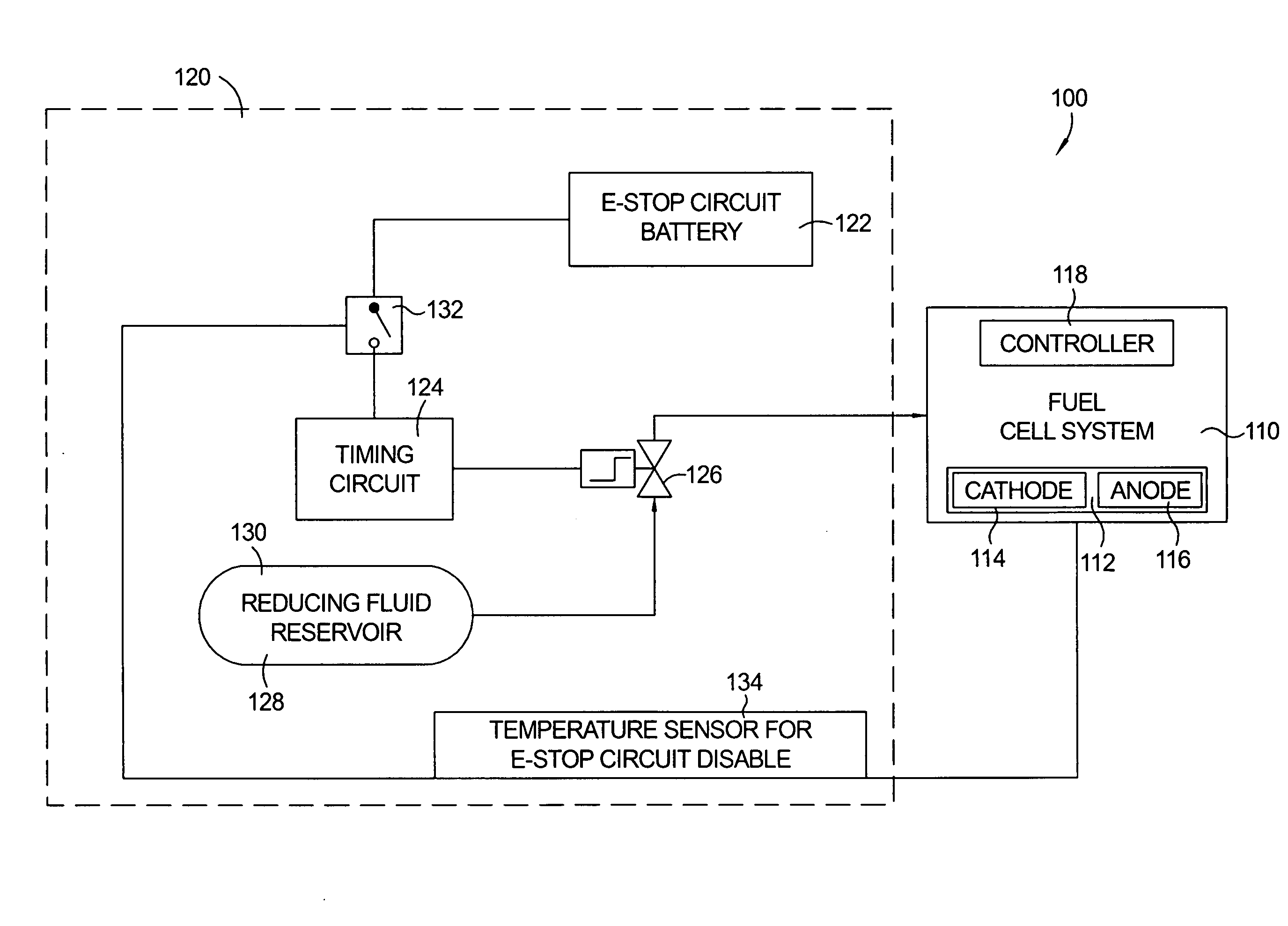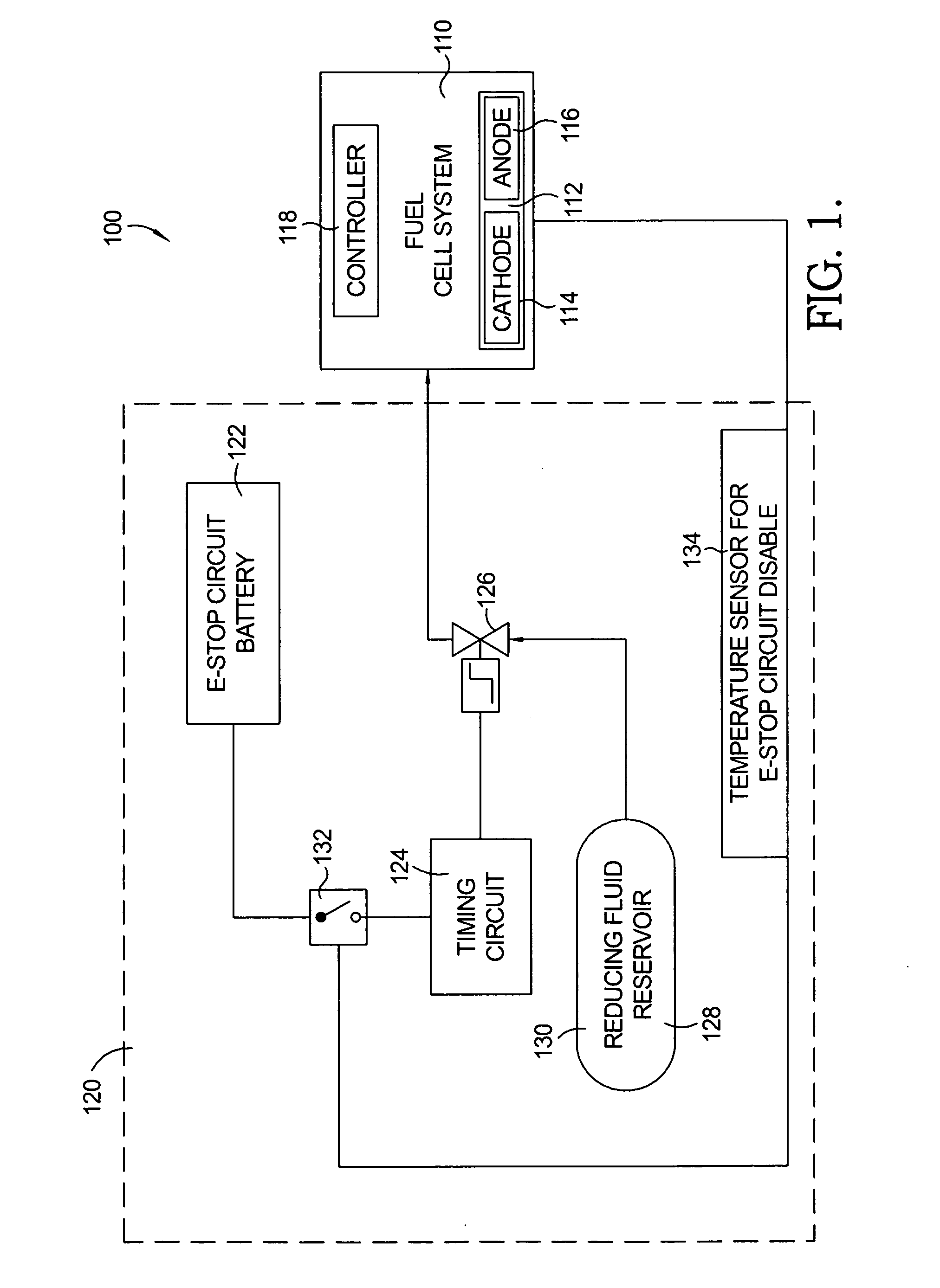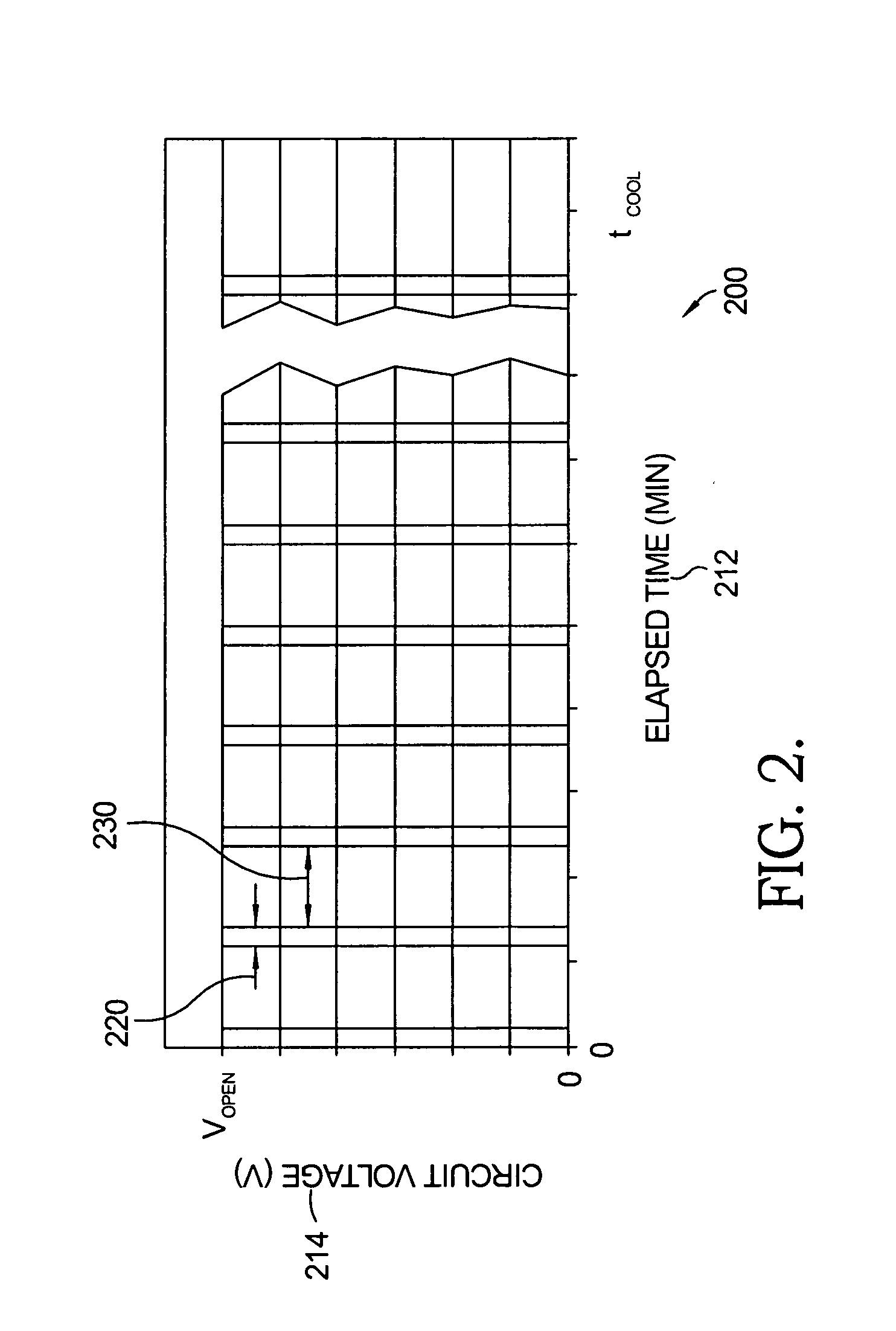Apparatus for solid-oxide fuel cell shutdown
a technology of solid-oxide fuel cell and apparatus, which is applied in the field of apparatus for solid-oxide fuel cell shutdown, can solve the problems of failure of sofc stack, deterioration of sofc stack, and so as to prevent degrading and fatiguing oxidation of anodes, reduce the volume of reducing fluid required per shutdown, and reduce the effect of fluid flow
- Summary
- Abstract
- Description
- Claims
- Application Information
AI Technical Summary
Benefits of technology
Problems solved by technology
Method used
Image
Examples
Embodiment Construction
[0020]Referring to FIG. 1, a schematic mechanization diagram of a Solid-Oxide Fuel Cell (SOFC) power plant 100 in accordance with the invention shows a SOFC system 110 and an emergency shutdown apparatus 120.
[0021]The SOFC system 110 includes at least one SOFC stack 112 as well as auxiliary equipment and controls. SOFC stack 112 includes a plurality of solid-oxide fuel cells stacked together in electrical series. Each of the fuel cells includes a cathode 114 and an anode 116, the plurality of cathodes 114 forming the cathode side of stack 112 and the plurality of anodes 116 forming the anode side of stack 112. Because each anode 116 and cathode 114 must have a free space for fluid passage over its surface, the cathode side and the anode side of stack 112 are typically separated by perimeter spacers which are selectively vented to permit fluid flow to the anodes 116 and cathodes 114 as desired but which also form seals on the axial surfaces to prevent fluid leakage from the cathode s...
PUM
| Property | Measurement | Unit |
|---|---|---|
| temperatures | aaaaa | aaaaa |
| operating temperature | aaaaa | aaaaa |
| temperature | aaaaa | aaaaa |
Abstract
Description
Claims
Application Information
 Login to View More
Login to View More - R&D
- Intellectual Property
- Life Sciences
- Materials
- Tech Scout
- Unparalleled Data Quality
- Higher Quality Content
- 60% Fewer Hallucinations
Browse by: Latest US Patents, China's latest patents, Technical Efficacy Thesaurus, Application Domain, Technology Topic, Popular Technical Reports.
© 2025 PatSnap. All rights reserved.Legal|Privacy policy|Modern Slavery Act Transparency Statement|Sitemap|About US| Contact US: help@patsnap.com



